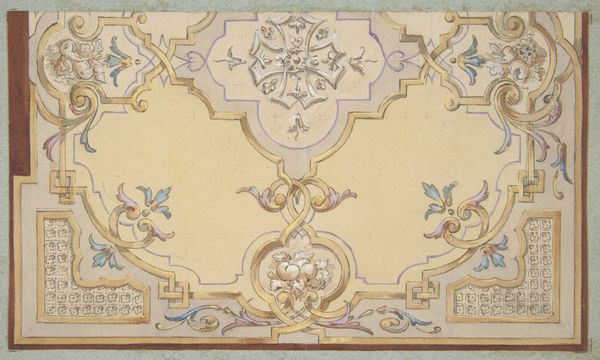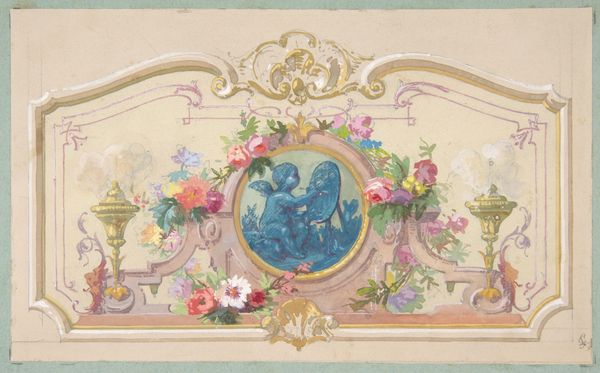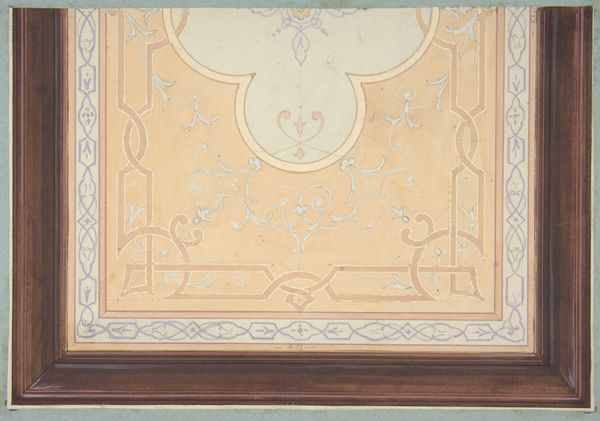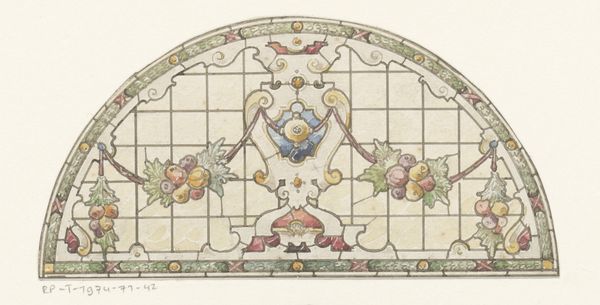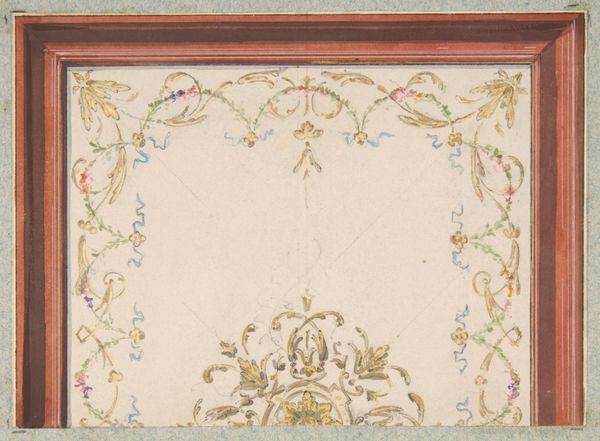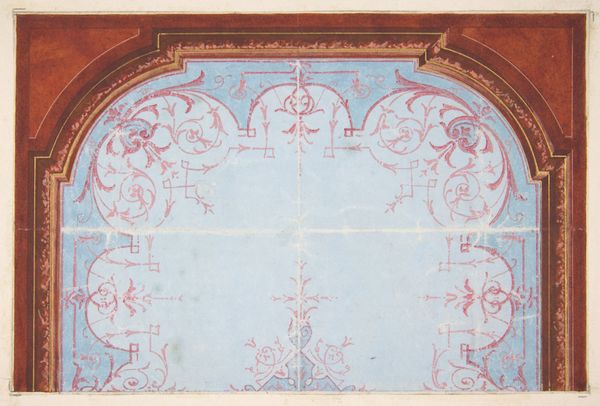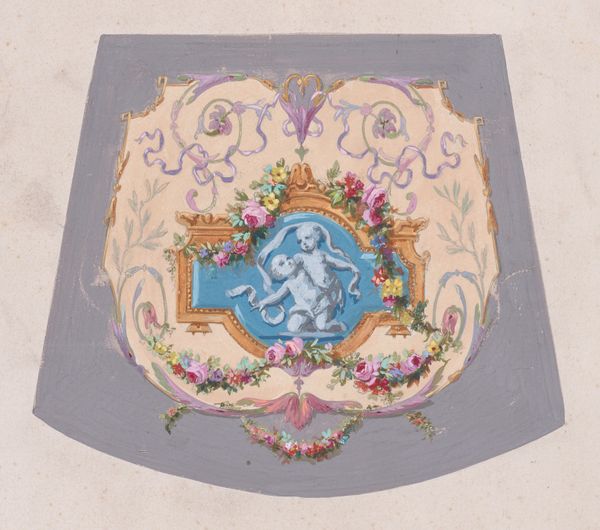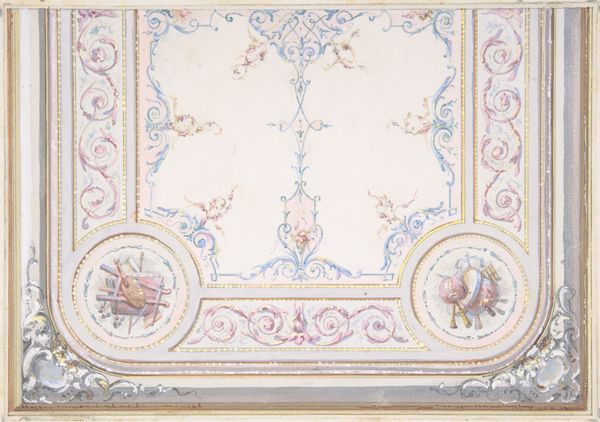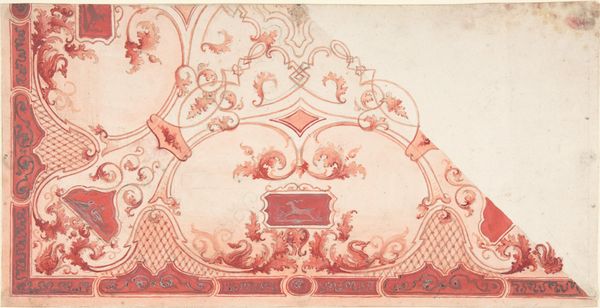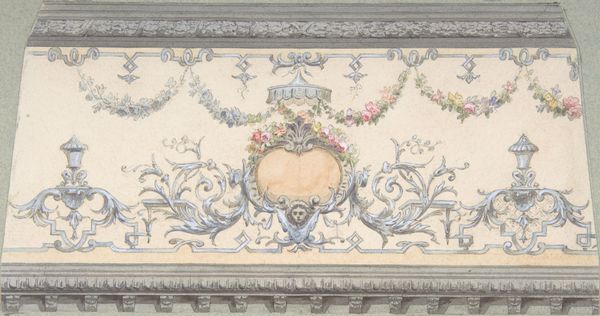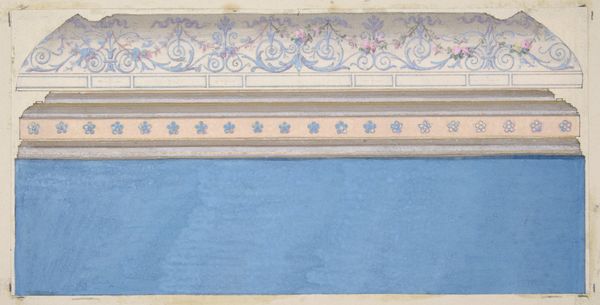
drawing, watercolor
#
drawing
#
water colours
#
watercolor
#
art nouveau
#
watercolour illustration
#
academic-art
#
decorative-art
#
watercolor
Dimensions: overall: 26.8 x 35.5 cm (10 9/16 x 14 in.) Original IAD Object: Approx. 1/2 size of object
Copyright: National Gallery of Art: CC0 1.0
Curator: This watercolor drawing, titled "Wall Painting", dates to about 1936, by an artist named Dana Bartlett. What are your initial thoughts on the work? Editor: It feels both decorative and slightly unsettling. The colors are soft, almost pastel, but there's a formality in the arrangement and these...snakes...pouring what, water? Green spit? It's odd. Curator: Indeed. Let's consider the context of this piece. Created in the 1930s, it’s fascinating to see a decorative wall painting in watercolour, perhaps referencing art nouveau or academic styles, when modernism was the prevalent aesthetic. Editor: I am struck by how deliberate each brushstroke seems. Given that it is watercolor on paper, and seemingly preparatory for something much larger – an actual wall perhaps? – you can't hide errors. It demands incredible technical skill. There's the labour, the making of a decoration versus a work in and of itself. How was something like this perceived in relation to mass-produced wall coverings? Curator: An excellent question. Its existence as an autonomous drawing asks us to consider it as more than merely a preliminary design. Instead, the artist, working perhaps during the Great Depression, challenges those divisions and ideas about consumption. Were such hand-crafted artistic elements already giving way to machine-made designs for the home? Editor: And those ram heads on the bowl... Is that a stylized radiator in front? A complex dialogue between luxury, industrial advancement and decoration. Where was this type of ornament going? Were those styles going out of fashion? Curator: Yes, the question of what was fashionable becomes so pertinent here, and raises complex social questions, as Bartlett worked, I imagine, for wealthy patrons eager for traditional decoration, the painting almost acting as a historical document in the present moment. Editor: I can see why it intrigued us! It's a quiet subversion rendered in such delicate, painstaking detail. Curator: Yes, and thinking about the conditions of this image helps us reimagine that domestic setting anew.
Comments
No comments
Be the first to comment and join the conversation on the ultimate creative platform.
